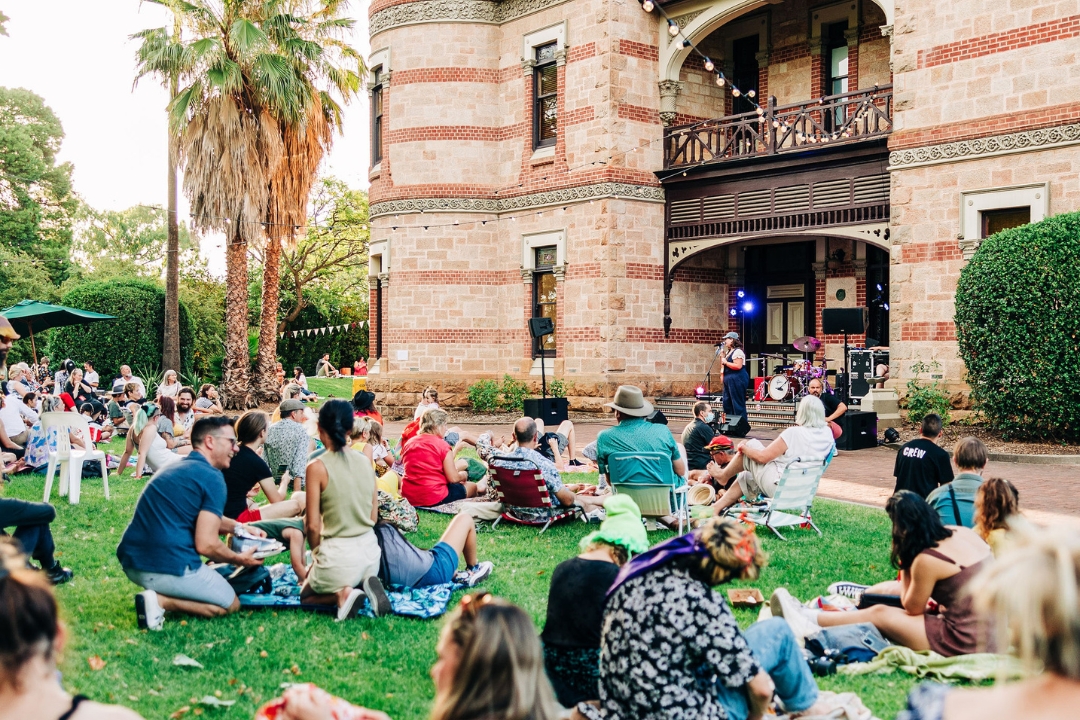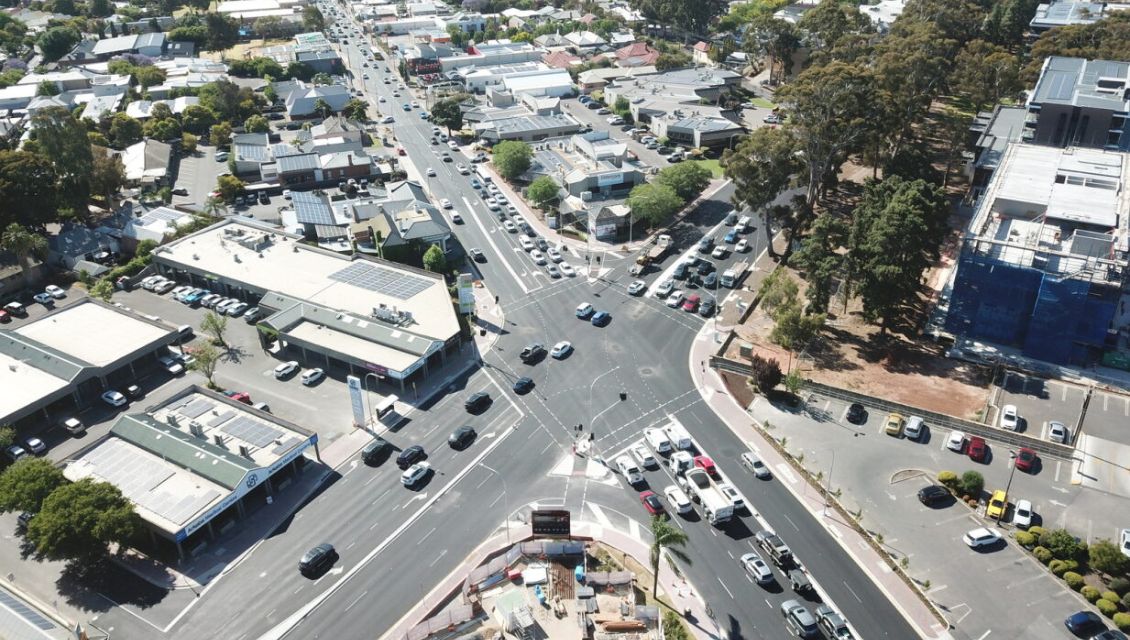
The golf course might be the natural habitat of the recently retired doctor, but it’s not where you’ll find Dr Richard 'Harry' Harris.
South Australia’s new Lieutenant Governor prefers to spend his free time deep under the earth in flooded caves, exploring underwater crevasses and tunnels, shining his torch into dark corners that have never before been seen by humans.
It sounds extreme – and it is – but the softly-spoken 60-year-old talks about his unusual hobby with his trademark matter-of-factness.
“There's two sorts of cave diving,” Dr Harris says over a coffee in the East End.
“The majority of what I do is just about being out with my friends on the weekend, down at Mount Gambier or over on the Nullarbor.
“It's all about spending time with mates, enjoying the bush, camping, sitting around a fire, and going for a dive in the daytime. It’s relaxing and pleasant and fun.
“And then there's a smaller percentage of the dives that I do which are about exploration.
“That's higher risk. You're going into places that people haven't been before, and you might be pushing your own limits, pushing the limits of the technology. And that's what really excites me.”
Going underground
An example of Dr Harris pushing those limits can be found in his recent forays into the Pearse River Resurgence on New Zealand’s South Island.
Dr Harris and his team – which includes fellow Thai cave rescuer and co-Australian of the Year Craig Challe n – have been trying to trace the source of the river. It might sound fairly straightforward, but the source of the Pearse is actually underground. Deep underground.
n – have been trying to trace the source of the river. It might sound fairly straightforward, but the source of the Pearse is actually underground. Deep underground.
Dr Harris and his compatriots have reached a depth of 245m so far. To put that into perspective, the highest building in Adelaide – Frome Central Tower One – is 138m tall.
To dive at such depths requires incredible amounts of preparation. Special gasses – in this case nitrogen – are needed in the tanks, and decompression times are up 16 hours.
It's high stakes stuff, literally life and death, but so was Dr Harris’s chosen profession of anaesthesiology – a fact that’s not lost on him.
“I see a lot of overlap with the two disciplines, actually, not just the physiology and the technologies, but also the mindset that's required to do them,” he says.
“When everything's fine, it's all very easy, it's very relaxed, and it's a pleasant thing to be doing. But just occasionally, when things go wrong, then there's literally, you know, minutes or seconds to resolve the problem.
“It's all in that moment, it's all about falling back on your training, and also having that mindset of I have to keep things under control. You have to avoid panic. As soon as you start to panic you lose that ability to solve problems and move forward. So I reckon there's a huge overlap, and I think I'm attracted to both of them for the same.”
The Thai cave rescue
It was this overlap, this venn diagram where cave diving and anaesthesiology meet, that saw Dr Harry take part in one of the most daring and inspiring rescues of the modern era - the 2018 extraction of 12 Thai children (pictured below before the emergency) and their teacher from the flooded Tham Luang cave.
The young soccer team were stranded deep within the cave by rising floodwaters, and the eyes of the world were keenly focused on the rescue effort.
 Dr Harris leveraged his connections in the dive world to be added to the rescue team and was one of the architects of a daring plan to anaesthetise the boys with ketamine and dive with their unconscious bodies through the flooded cave system.
Dr Harris leveraged his connections in the dive world to be added to the rescue team and was one of the architects of a daring plan to anaesthetise the boys with ketamine and dive with their unconscious bodies through the flooded cave system.
It was a plan that Dr Harris admits he was initially appalled by – it was simply too risky – but he eventually came to the conclusion that it was the only way the boys were coming out of the cave alive. With the help of fellow Aussie Mr Challen and a huge team of divers and helpers all 12 boys and their teacher were brought out alive.
It was an incredibly complex rescue, and involved re-dosing the boys with anaesthetic during the rescue so that they didn’t regain consciousness and panic. The word “miracle” is used a lot in media reports, but in this case it was entirely appropriate.
The rescue, Dr Harris says, changed “every single aspect” of his life.
“It certainly changed my life but, hopefully, it didn’t change who I am too much,” he says. “One thing it did do was make me a more confident person and make me a better public speaker.”
Life in  the spotlight
the spotlight
Not that Dr Harris had much choice, because in 2019 he and Mr Challen (pictured diving together) were made joint Australians of the Year.
He suddenly found himself with a national platform and no real agenda – he was just a doctor who liked to dive – so he fell back on the thing that was dear to him in adventure.
“It’s an award that usually goes to someone who’s curing cancer or solving poverty,” he says.
“So I thought. ‘What's important to me?’ and I knew it had to be something to do with young people, maybe with mental health. I looked at what I, as an adventurer, could bring in terms of a message to that space.
“I think we've become more and more cautious with our children, more obsessed by these perceived dangers, which in reality are probably less of a thing than they ever were.
“And Craig was very similarly aligned on this idea that you need to do hard things to build resilience throughout your life.”
'Roll up your sleeves and have a go at anything'
Ultimately, Dr Harris says, his message to young people is to have a crack. At everything.
“Be a generalist,” he says. “Roll up your sleeves and have a go at anything. Try and learn about the piano and the internal combustion engine, economics, politics. Be a polym ath.
ath.
“That’s the message I’ve tried to spread – if you get asked to do something, your first instinct should be to say yes.”
Which is exactly what he said when asked if he’d consider the role of South Australian Lieutenant Governor.
Dr Harris was sworn in at a ceremony at Government House in January, and says he sees the new role as a chance to give back to the state he loves.
“It’s a chance to do more community work, and a chance to meet more South Australians,” he says.
Officially, the Lieutenant Governor is “the first person to be called to act as the Vice Regal representative in the absence of the Governor” – a job description Dr Harris says could be problematic.
“The problem is that Her Excellency (The Honourable Frances Adamson AC) is such a hardworking person that there won’t be any scraps leftover for me,” he laughs.
Dr Harry’s Five Favourite South Australian Places
- Coffin Bay (pictured): That’s where it all started for me. Every summer holiday we’d get
 in the Kingswood and tow our little boat over there to stay with four other groups of family friends.
in the Kingswood and tow our little boat over there to stay with four other groups of family friends. - Kangaroo Island: Like Coffin Bay, it’s where I started fishing and diving. I worked on a farm down there as a kid.
- The River Murray: Dad came from Renmark and his father came from Renmark. I remember carrying bullets in an old canvas bag while dad was duck shooting – I don’t think we ever hit much.
- Flinders Ranges: Both because we did camping trips up there as a kid and also because I'm involved with Operation Flinders.
- The South-East: This is an obvious one, because of its incredible caves.







